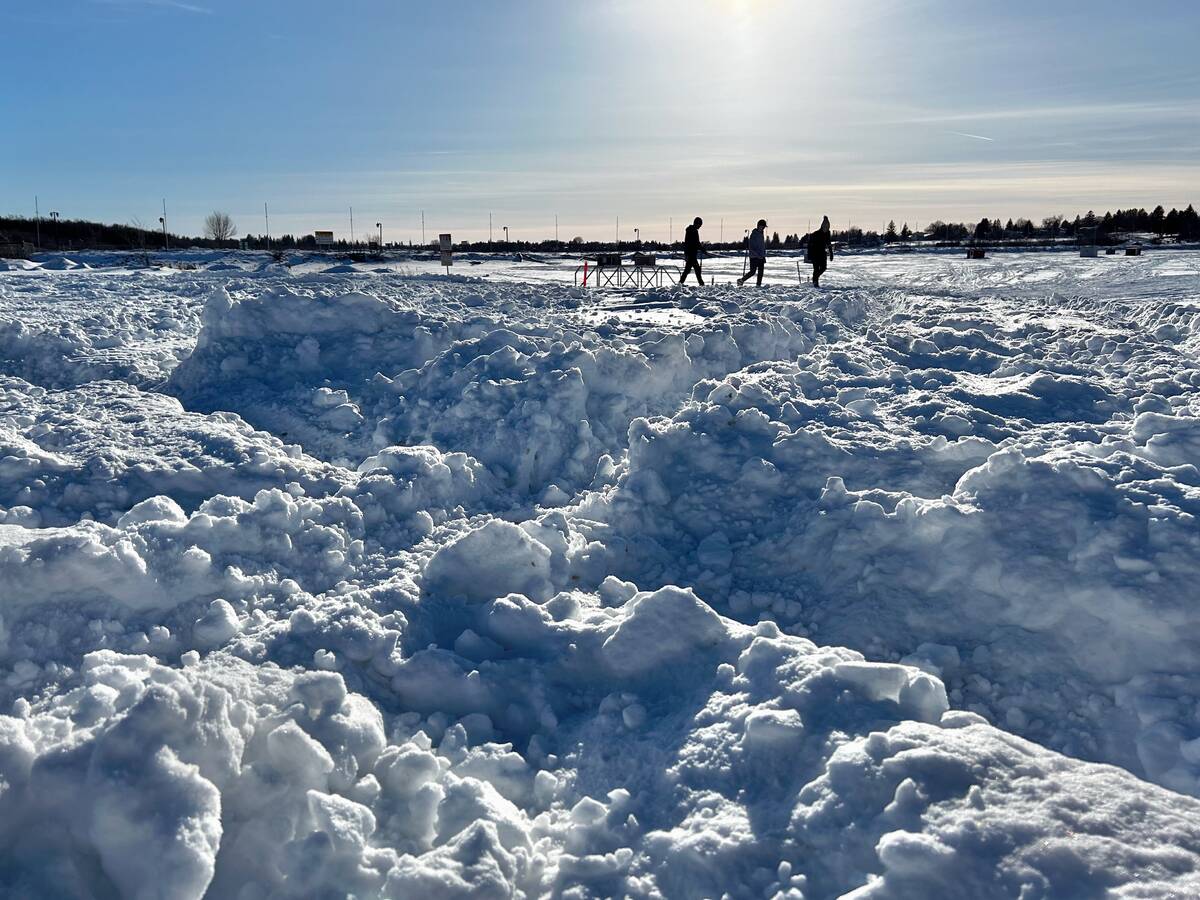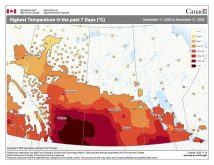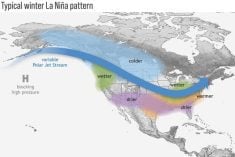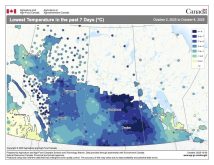In the last class of Meteorology 101, we looked at how heat moves around by examining conduction, convection, advection and latent heat transfer. This week we will explore the Earth’s energy balance, or what is often referred to as our energy budget.
First, let’s look at the greenhouse effect. It’s a topic that gets some people worked up, but this is because they confuse the greenhouse effect with global warming. While these topics are related, they are not the same thing.
So far in our classes, we have learned that the Earth absorbs shortwave energy coming from the sun. This energy is turned into heat and moved around by conduction, convection, advection and latent heat transfer.
Read Also

Predicting Manitoba winter snowfall
How much snow should farmers in Manitoba expect for the rest of December 2025 and into January-February 2026? Here’s what the weather models say about the winter to come.
If the Earth constantly absorbed short-wave radiation from the sun and did not give off any radiation of its own, our planet would get hotter each day. Since this isn’t the case, the Earth must be releasing this heat energy in some way, and it does this by emitting long-wave radiation.
The Earth absorbs short-wave radiation, heats up, and then cools off by emitting long-wave radiation back into space, so where does the greenhouse effect come into play?
Our atmosphere is quite transparent to short-wave radiation coming from the sun, much like the glass in a greenhouse. Most of the sun’s energy makes it through the atmosphere to reach the Earth’s surface, where it is converted to heat.
This heat is radiated back toward space in the form of long-wave radiation. In a greenhouse, the glass does not allow all of the long-wave radiation to pass through it. Instead, it traps the heat energy inside. The same thing happens in your car when it sits in direct sunshine.
Our atmosphere acts kind of like the glass in a greenhouse or car, although it is not exactly the same. Carbon dioxide, water vapour, methane, nitrous oxide and other gases absorb some of the outgoing long-wave radiation and re-emit it back toward the Earth’s surface. So, the heat is not trapped like it is in a greenhouse, but rather it is delayed in its passage to space, and this delay is what makes the Earth habitable.
Without this greenhouse effect, the average temperature on Earth would be a rather chilly -18 C, a far cry from the balmy 16 C it is now.
Now that we know the greenhouse effect is a good thing, and that without it we would not be able to survive, why do some people get worked up about global warming and the greenhouse effect?
The reason is that, like so many things, the wrong information or term is used and it becomes entrenched in the way things are reported. When scientists or the media talk about global warming and the greenhouse effect, what they should really be saying is the “enhanced” greenhouse effect.
The idea behind the enhanced greenhouse effect is that if we add more gasses to the atmosphere than would normally be there, and these gases absorb long-wave radiation and re-emit it back to Earth, then logically we should see an increase in the overall temperature of the Earth.
I don’t think anyone, whether for or against global warming, disagrees on this fact. Increasing the amount of greenhouse gases will allow for more long-wave radiation to be absorbed and retransmitted back to the Earth’s surface.
Why are there people who don’t think the Earth is undergoing warming due to this enhanced greenhouse effect? The answer is that it is not as simple as absorbing more long- wave radiation and re-emitting it back to Earth.
Simply absorbing more long-wave radiation doesn’t necessarily mean the Earth will warm up. This is due to all the different feedback mechanisms that come into play.
For example, as more long-wave energy is absorbed and then re-emitted, there is a good chance that more water will evaporate into the atmosphere, increasing the amount of vapour. More water vapour means more long-wave radiation will be absorbed and re-emitted, so we should get even warmer. But more water vapour can also mean more clouds, and more clouds result in more shortwave energy from the sun being reflected to space.
More clouds mean colder temperatures, at least under certain circumstances. What if the increase in cloud cover occurs more at night when the sun’s not shining? Then the clouds don’t block incoming shortwave radiation, but they do help to absorb outgoing long-wave radiation, so now it means even warmer temperatures.
As you can see, it is not a simple matter, and this is only one part to the global warming/enhanced greenhouse effect puzzle.
















